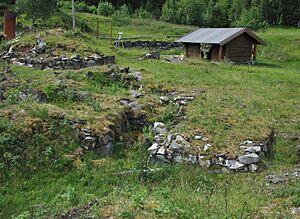William Davidson of Curriehill facts for kids
Sir William Davidson, 1st Baronet of Curriehill, was an important Scottish businessman and a trusted helper to the King. Born around 1614 or 1615 in Dundee, Scotland, he became a successful trader in Amsterdam, the Netherlands. He also worked as an agent and even a spy for King Charles II of England, and was part of the King's special advisory group, the Privy Council.
Contents
Early Life and Business
Not much is known about William Davidson's early life or family. After 1640, he moved to Holland and started trading goods, especially in the Baltic Sea region. This area was very important for trade at the time.
In 1645, when he was about 29 years old, he married Geertruid Schuring. Later, in 1648, he hired a famous scientist named Anthony van Leeuwenhoek to work as his assistant. Van Leeuwenhoek stayed with Davidson for six years. William Davidson lived and worked in Amsterdam, a busy city known for its trade.
Supporting the King
During the English Civil War, a big conflict in England, William Davidson chose to support the Stuarts, the royal family of England. This showed his loyalty to the King.
His first wife, Geertruid, passed away in 1652. He then married Geertruid van Dueren, who also passed away in 1658. During these years, he lived near the harbor in Amsterdam and was involved in selling wine in Stockholm, Sweden.
In May 1660, William Davidson traveled to The Hague to meet Charles II, who was on his way back to England to become King. This meeting was a sign of Davidson's close connection to the royal family.
In July 1660, Mary Stuart, who was the King's sister, stayed at Davidson's house in Amsterdam. She was there to discuss the education of her young son, William III of Orange, who was only ten years old at the time. This shows how important Davidson's home was for royal visitors. In February, he married Elisabeth Klenck, whose brother had given a special map collection, the Klencke Atlas, to the King.
Working for the Crown
In 1661, William Davidson was made a baronet by King Charles II, which is a special title of honor. The next year, in 1662, he was officially appointed as the King's agent in Amsterdam. This meant he represented the King's interests in the Netherlands. He also became the "conservator of the staple" in Veere, a Dutch town where Scottish merchants often traded.
During the Second Anglo-Dutch War in 1664, he moved to Hamburg, Germany. He also got involved in a salt company in Denmark in 1666, working with a man named Cort Adeler.
Mining and Industry
From 1664, William Davidson started a new business: mining for iron in Mostadmark, a place in Malvik, Norway, which is east of Trondheim. He received special permission for 20 years from King Frederik III of Denmark and Hannibal Sehested (governor) of Norway.
Davidson invested a lot of money in these ironworks starting in 1656. He put Alexander Wishart in charge of the production. He was also involved in a sawing mill, which cuts wood, and the production of tar, a sticky substance used for many things.
In 1666, he sold his ironworks and his share of the salt company to his brother-in-law, Coenraad van Klenck. By 1667, he was living in Edinburgh, Scotland. Davidson also helped King Charles II communicate with Johan de Witt, an important Dutch leader.
In 1668, he tried to move the main trading center for Scottish goods from Veere to Dordrecht in the Netherlands. That same year, he became the Lord of Curriehill, a title that gave him land and status. In 1672, he was involved in the tobacco trade from Virginia.
On October 14, 1670, King Christian IV of Denmark gave him permission to start mining for copper in Klaebu, south of Trondheim. He started a company called the Ulrichsdal Mining Company and built a special building called a melting-cabin at Hyttefossen in Klaebu to process the copper. However, this venture did not go well, and he eventually ran out of money. By 1675, he had left Trondheim. Davidson spent the rest of his life dealing with legal problems and complaints from people in Trondheim.
Later Years
Sometime after 1678, William Davidson moved back to Scotland. He had made his will in Amsterdam. He had four children who inherited from him: Bernard (born 1648), Elisabeth (born 1651), Catharina Geertrui (born 1663), and Agnes (born 1666). Catharina received his Indonesian silver and portraits of his parents-in-law. Not much is known about his collection of interesting objects, called a cabinet of curiosities, or his special lacquered furniture and boxes. He passed away around 1689 in Edinburgh.
Images for kids



